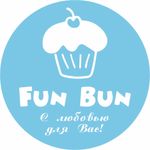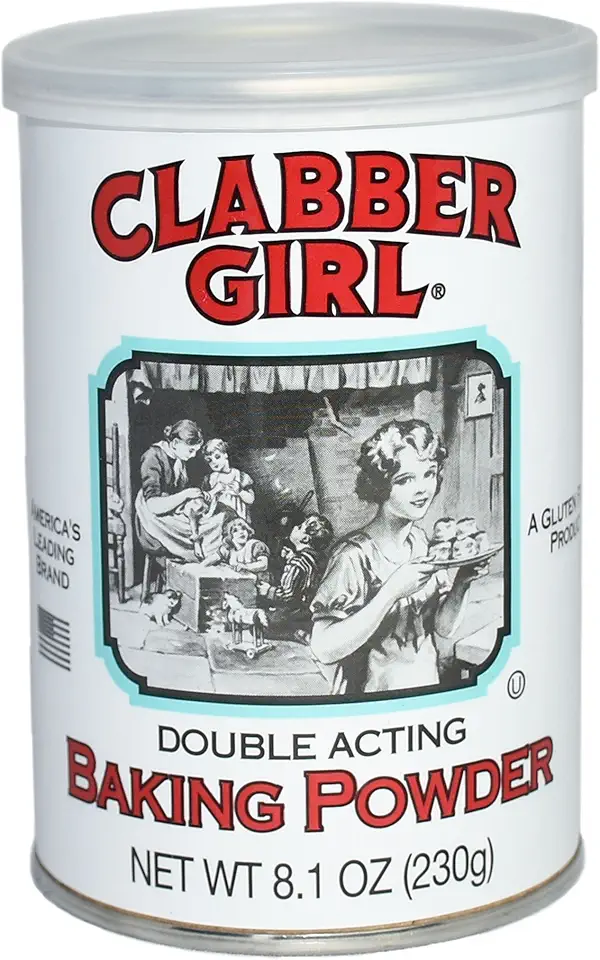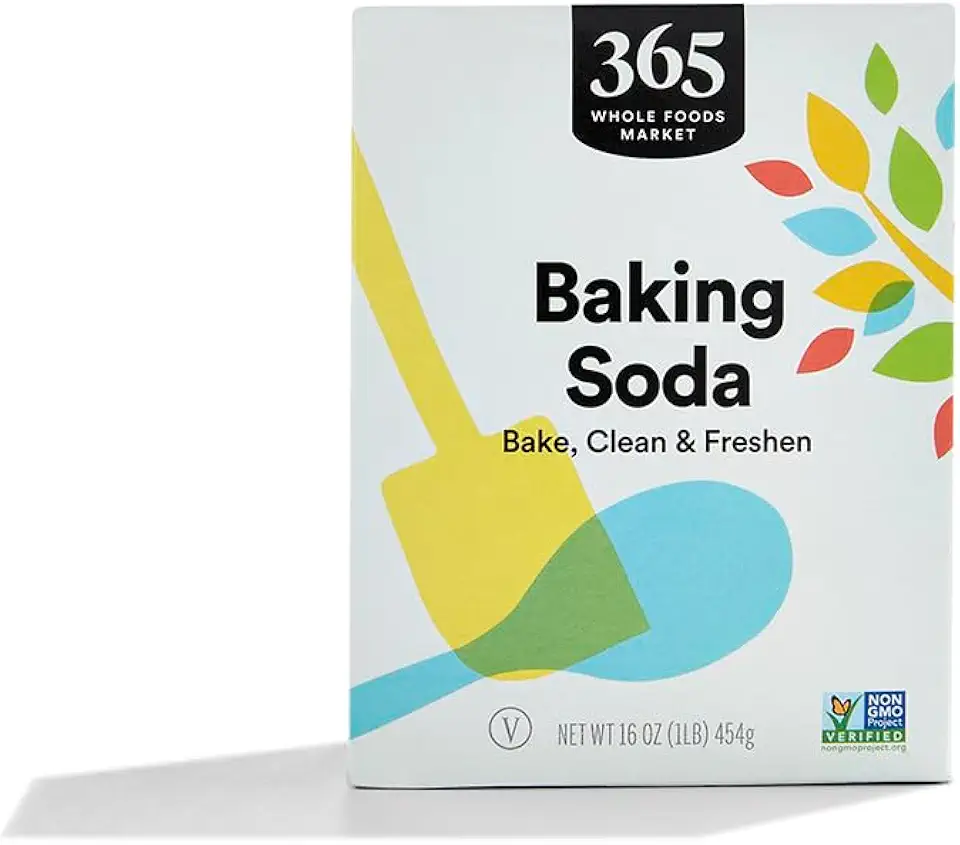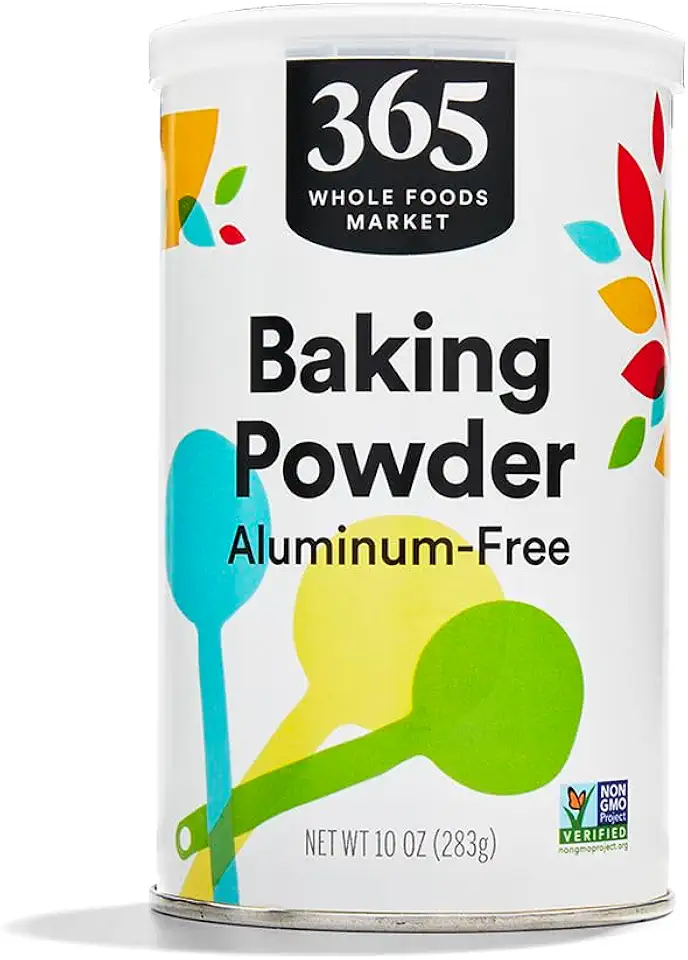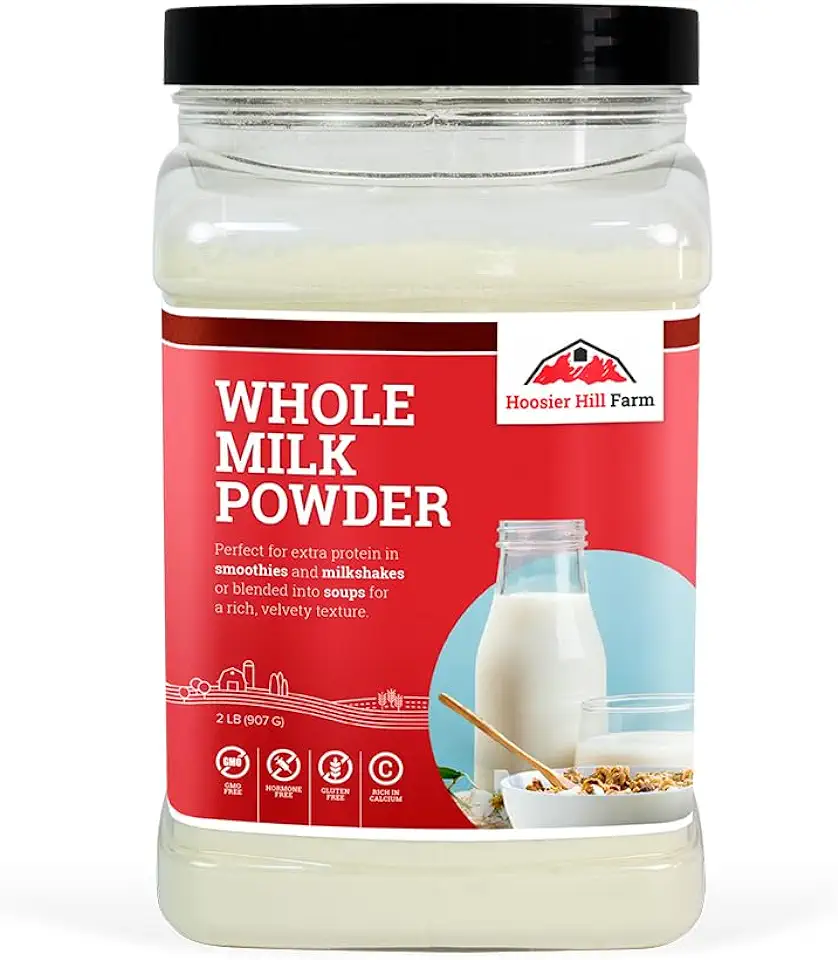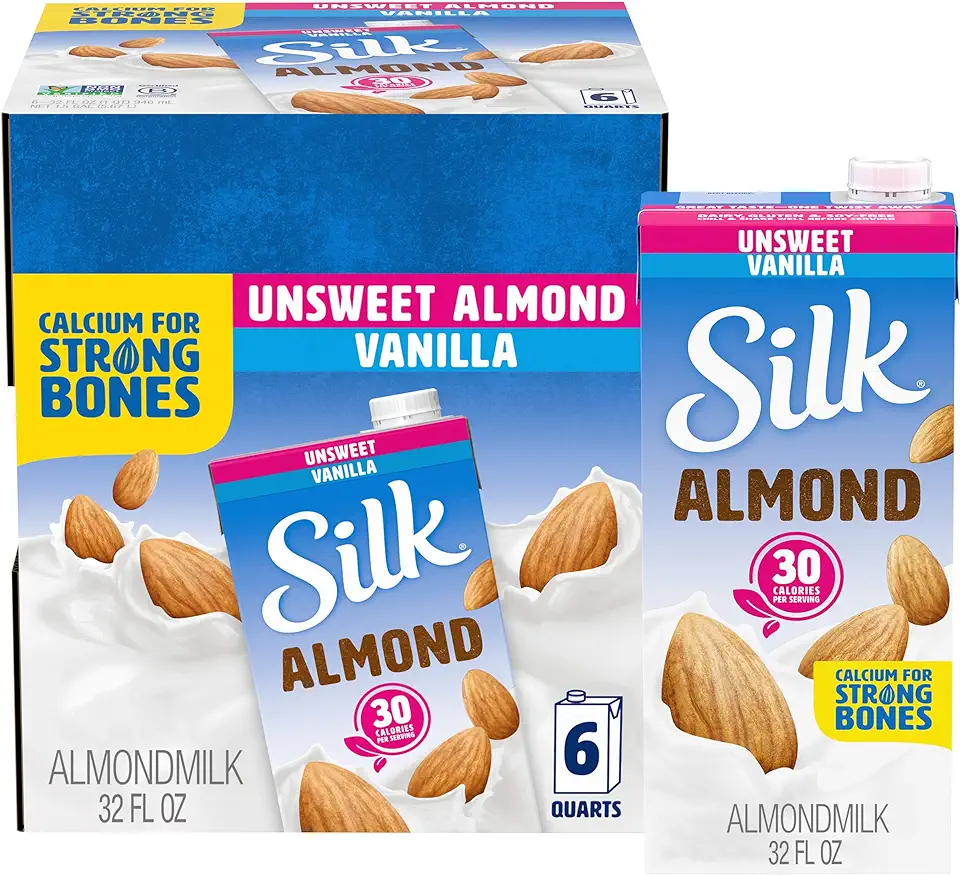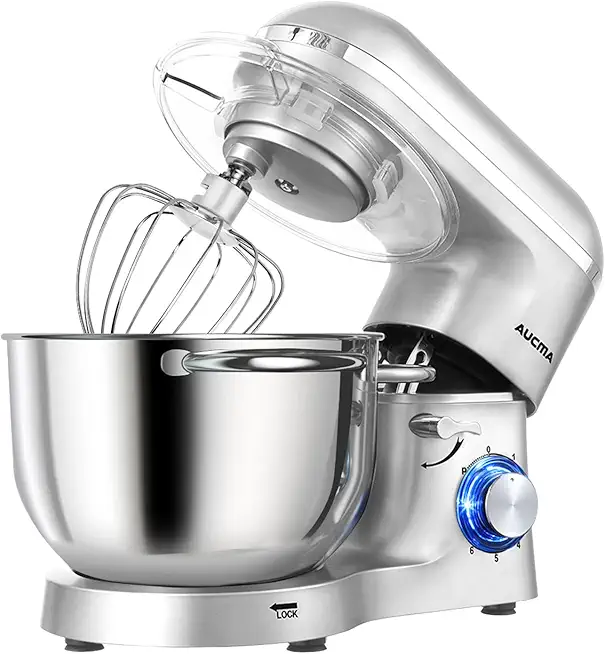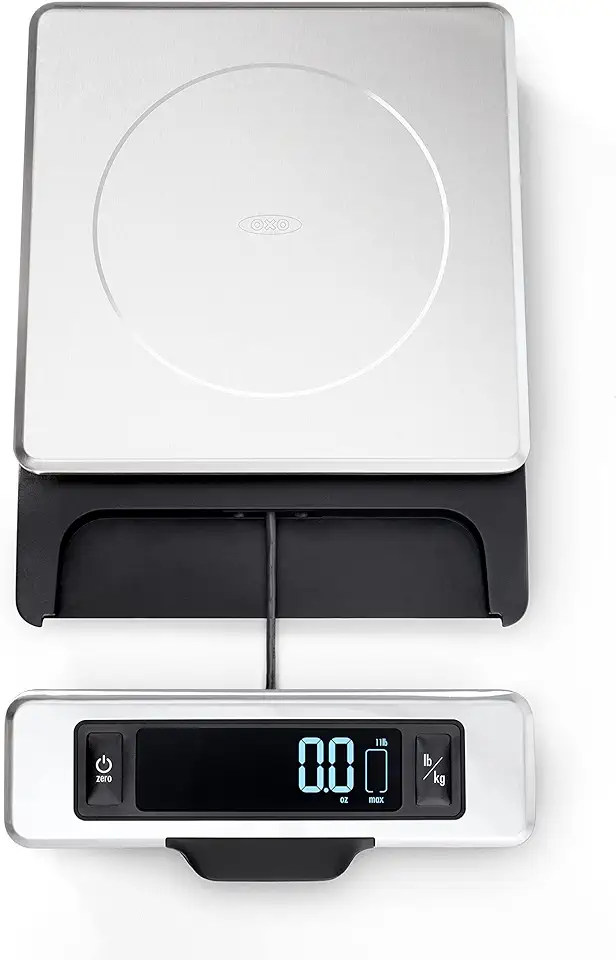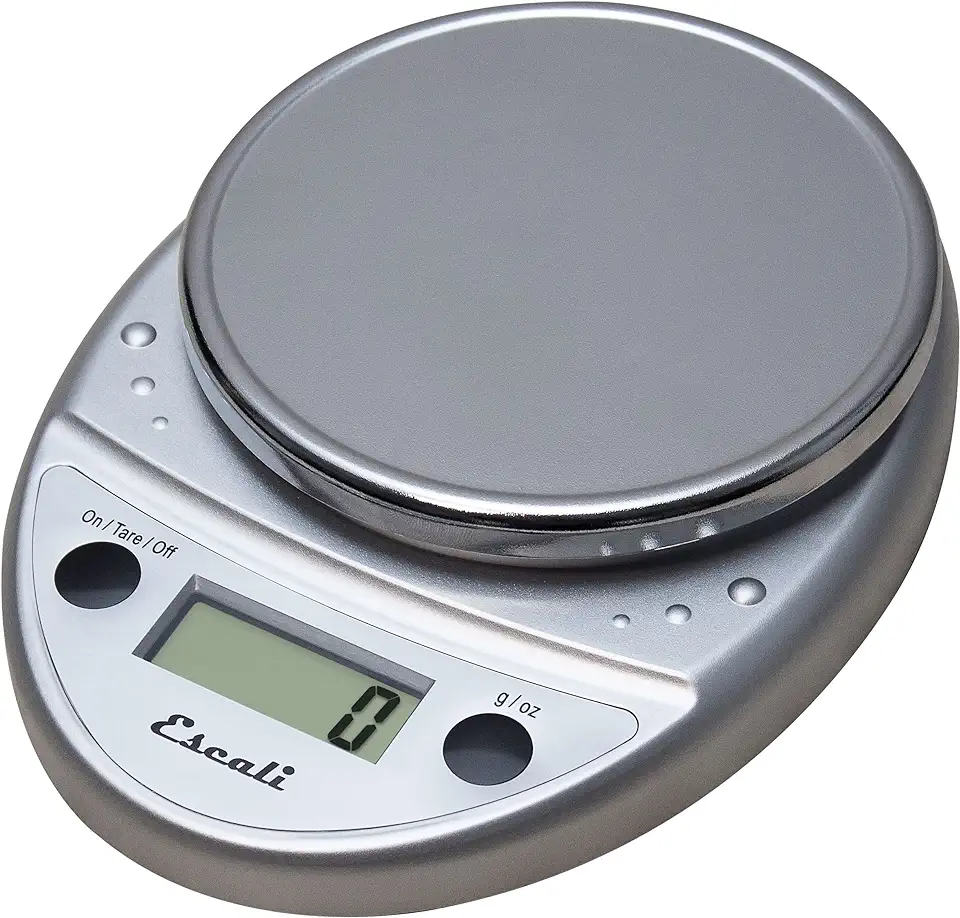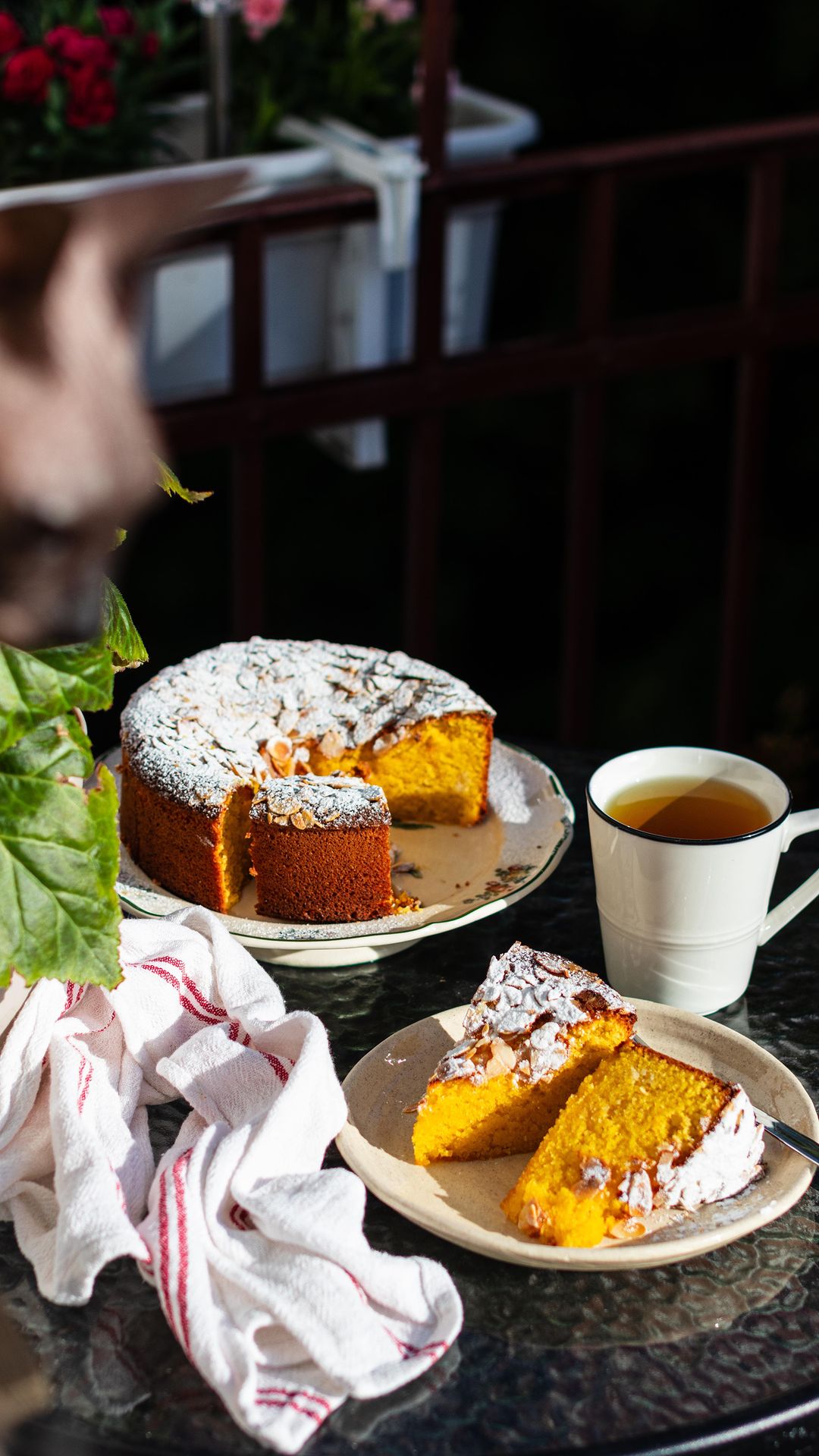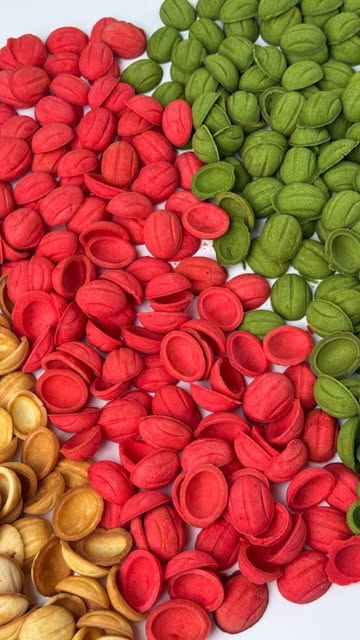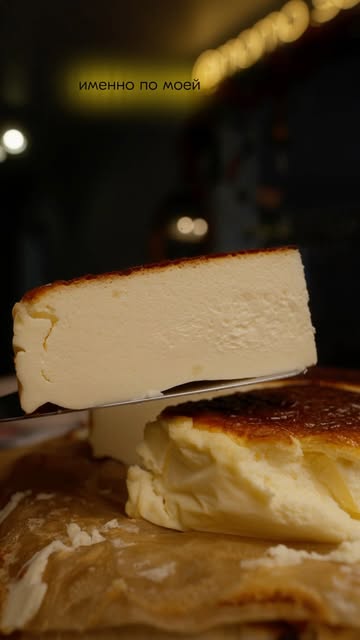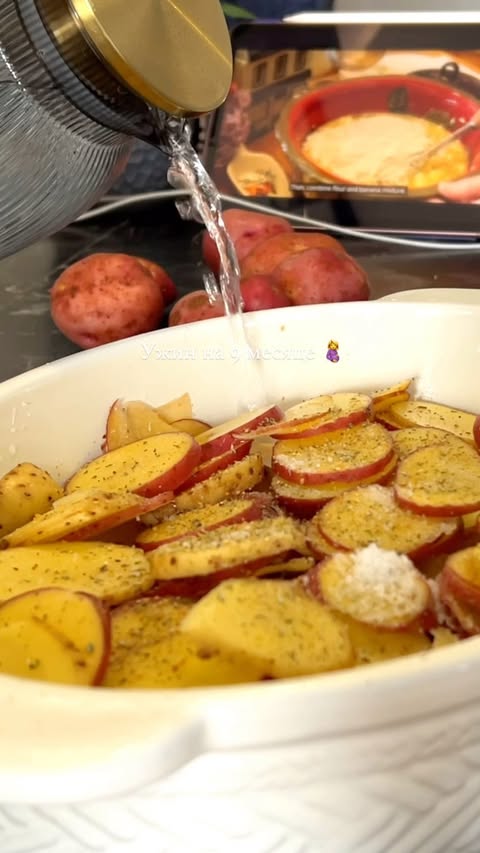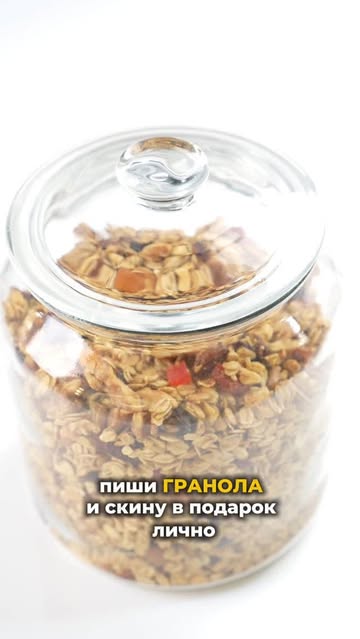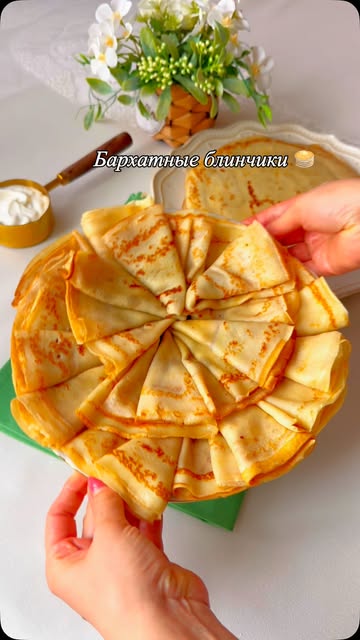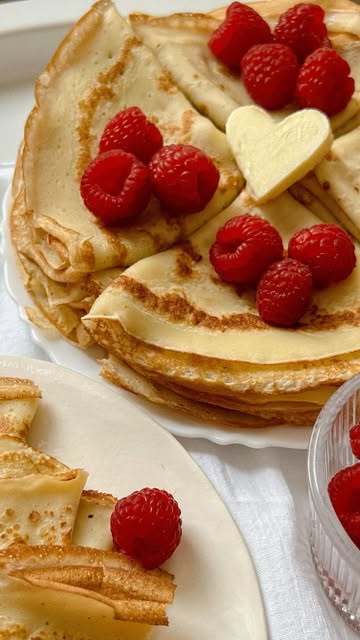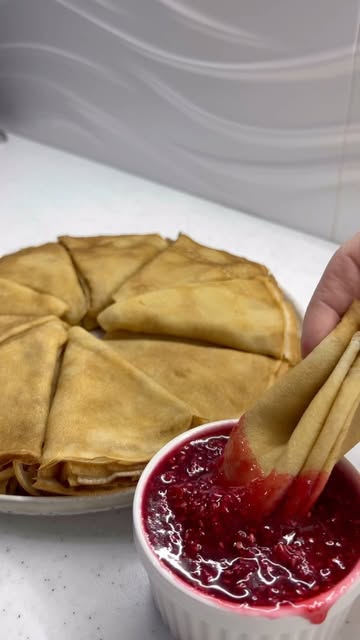Ingredients
Dry Ingredients
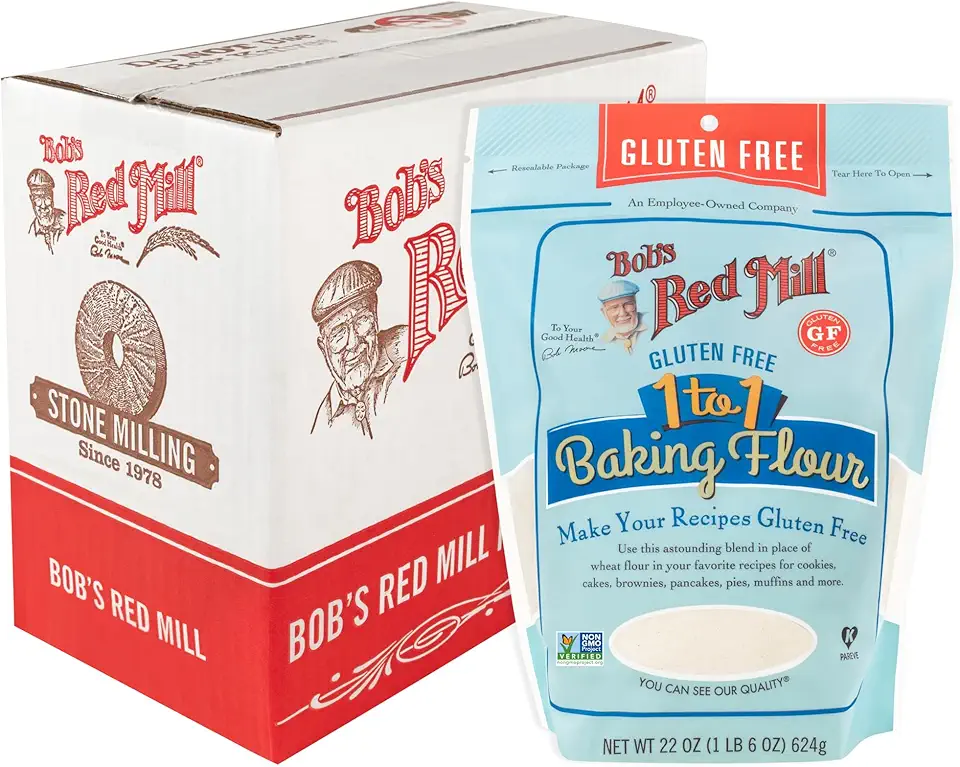 Bob's Red Mill Gluten Free 1-to-1 Baking Flour, 22 Ounce (Pack of 4)
$23.96
View details
Prime
Bob's Red Mill Gluten Free 1-to-1 Baking Flour, 22 Ounce (Pack of 4)
$23.96
View details
Prime
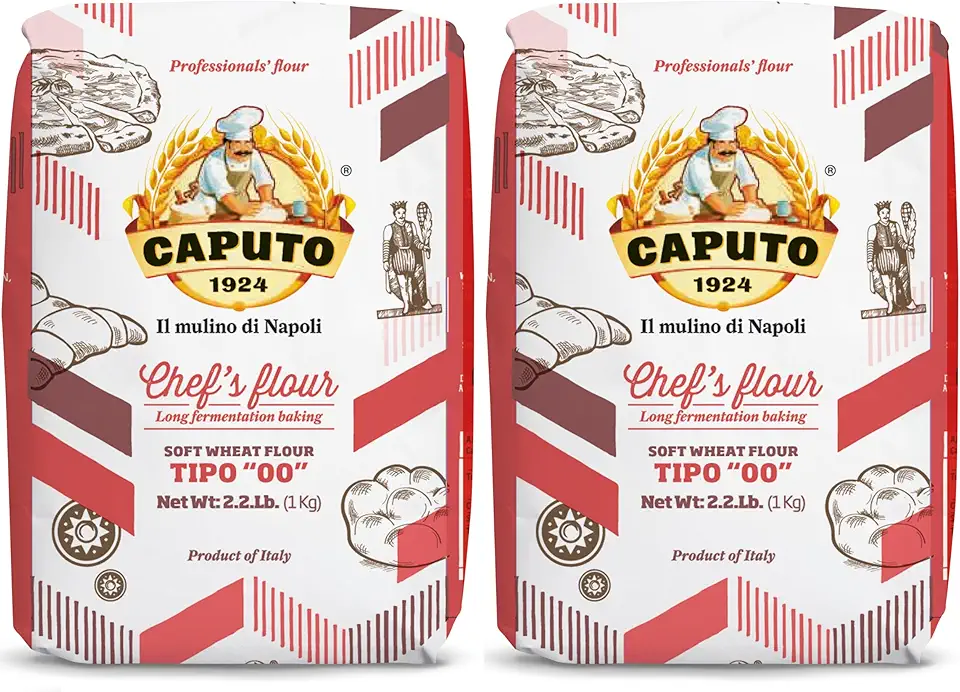 Antimo Caputo Chefs Flour - Italian Double Zero 00 - Soft Wheat for Pizza Dough, Bread, & Pasta, 2.2 Lb (Pack of 2)
$16.99
View details
Prime
best seller
Antimo Caputo Chefs Flour - Italian Double Zero 00 - Soft Wheat for Pizza Dough, Bread, & Pasta, 2.2 Lb (Pack of 2)
$16.99
View details
Prime
best seller
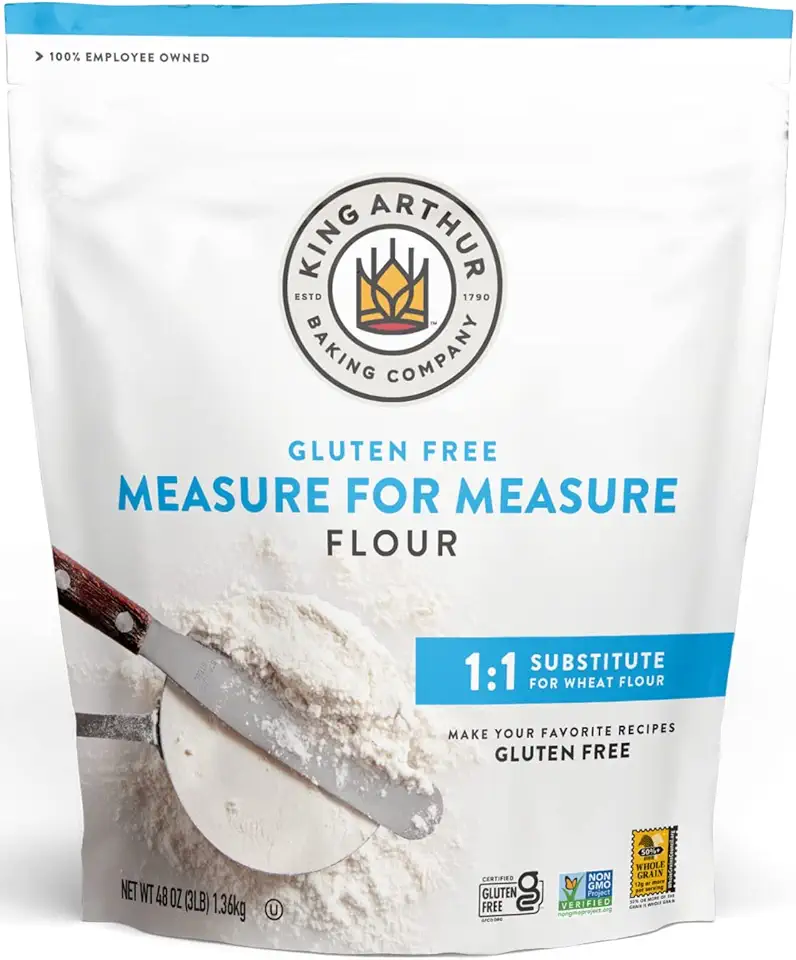 King Arthur, Measure for Measure Flour, Certified Gluten-Free, Non-GMO Project Verified, Certified Kosher, 3 Pounds, Packaging May Vary
$8.62
View details
King Arthur, Measure for Measure Flour, Certified Gluten-Free, Non-GMO Project Verified, Certified Kosher, 3 Pounds, Packaging May Vary
$8.62
View details
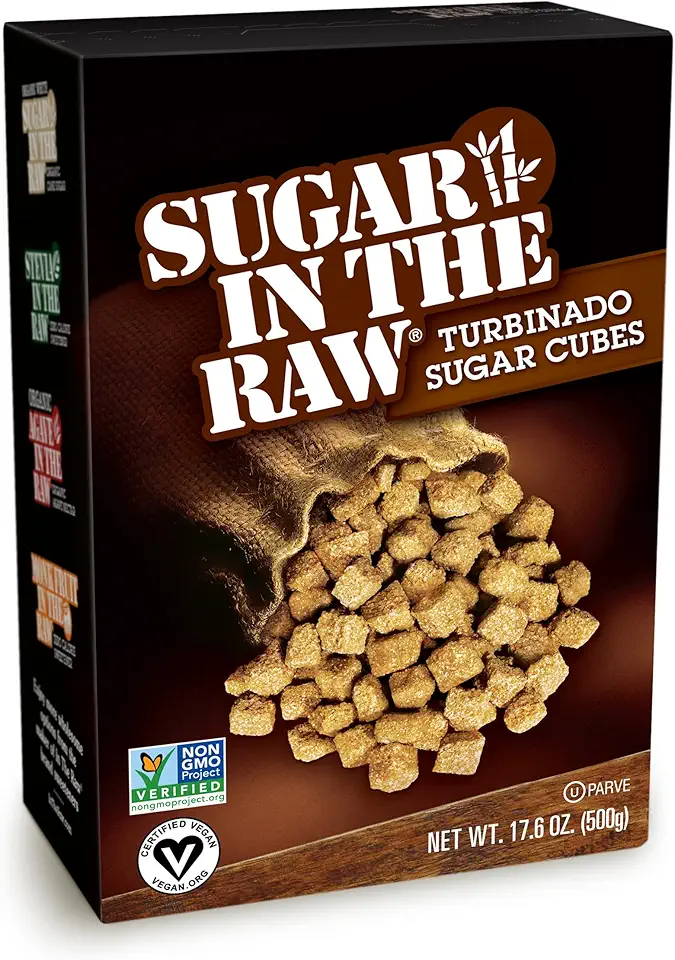 Sugar In The Raw Granulated Turbinado Cane Sugar Cubes, No Added Flavors or erythritol, Pure Natural Sweetener, Hot & Cold Drinks, Coffee, Vegan, Gluten-Free, Non-GMO,Pack of 1
$5.27
View details
Prime
Sugar In The Raw Granulated Turbinado Cane Sugar Cubes, No Added Flavors or erythritol, Pure Natural Sweetener, Hot & Cold Drinks, Coffee, Vegan, Gluten-Free, Non-GMO,Pack of 1
$5.27
View details
Prime
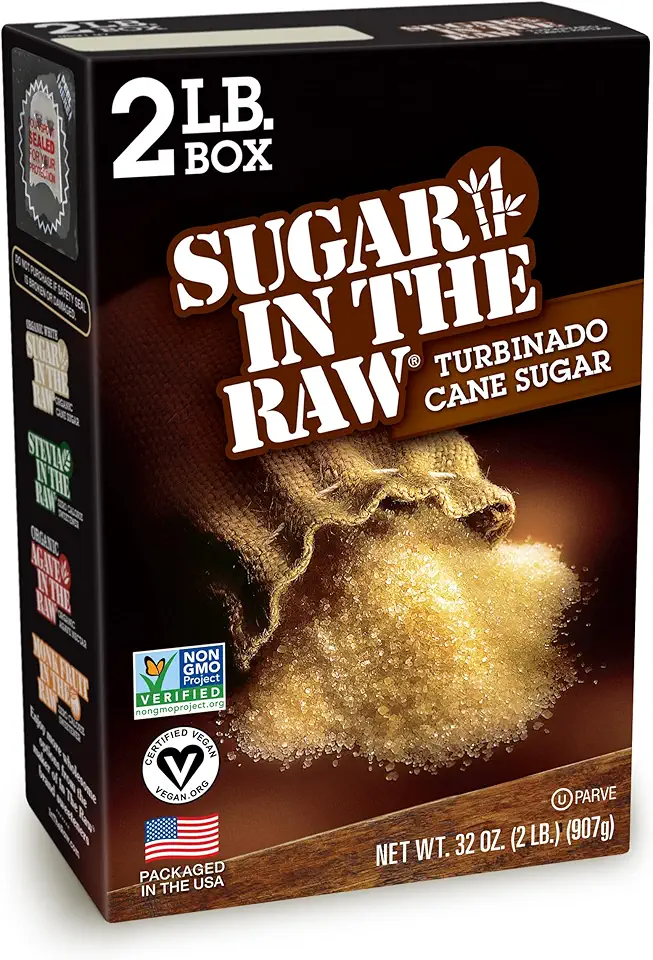 Sugar In The Raw Granulated Turbinado Cane Sugar, No Added Flavors or erythritol, Pure Natural Sweetener, Hot & Cold Drinks, Coffee, Baking, Vegan, Gluten-Free, Non-GMO, Bulk Sugar, 2lb Bag (1-Pack)
$3.74
$4.14
View details
Prime
Sugar In The Raw Granulated Turbinado Cane Sugar, No Added Flavors or erythritol, Pure Natural Sweetener, Hot & Cold Drinks, Coffee, Baking, Vegan, Gluten-Free, Non-GMO, Bulk Sugar, 2lb Bag (1-Pack)
$3.74
$4.14
View details
Prime
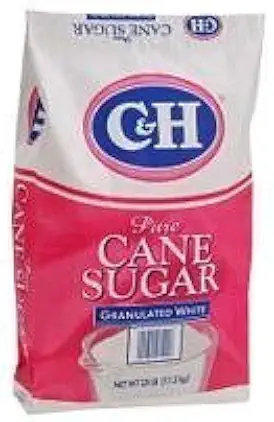 C&H Pure Cane Granulated White Sugar, 25-Pound Bags
$56.99
$49.98
View details
C&H Pure Cane Granulated White Sugar, 25-Pound Bags
$56.99
$49.98
View details
Wet Ingredients
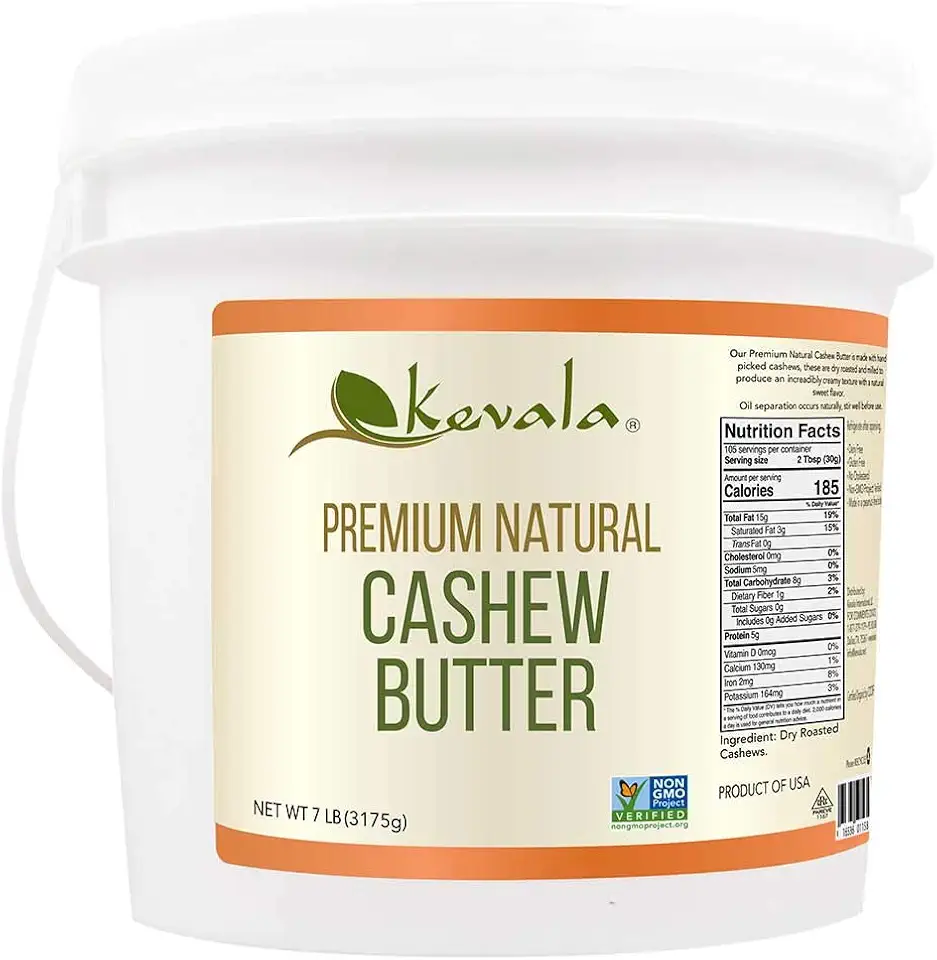 Kevala Cashew Butter 7 Lbs Pail
$83.62
View details
Prime
best seller
Kevala Cashew Butter 7 Lbs Pail
$83.62
View details
Prime
best seller
 4th & Heart Original Grass-Fed Ghee, Clarified Butter, Keto, Pasture Raised, Lactose and Casein Free, Certified Paleo (9 Ounces)
$11.49
View details
Prime
4th & Heart Original Grass-Fed Ghee, Clarified Butter, Keto, Pasture Raised, Lactose and Casein Free, Certified Paleo (9 Ounces)
$11.49
View details
Prime
 4th & Heart Himalayan Pink Salt Grass-Fed Ghee, Clarified Butter, Keto Pasture Raised, Non-GMO, Lactose and Casein Free, Certified Paleo (9 Ounces)
$9.49
View details
4th & Heart Himalayan Pink Salt Grass-Fed Ghee, Clarified Butter, Keto Pasture Raised, Non-GMO, Lactose and Casein Free, Certified Paleo (9 Ounces)
$9.49
View details
Flavors & Additions
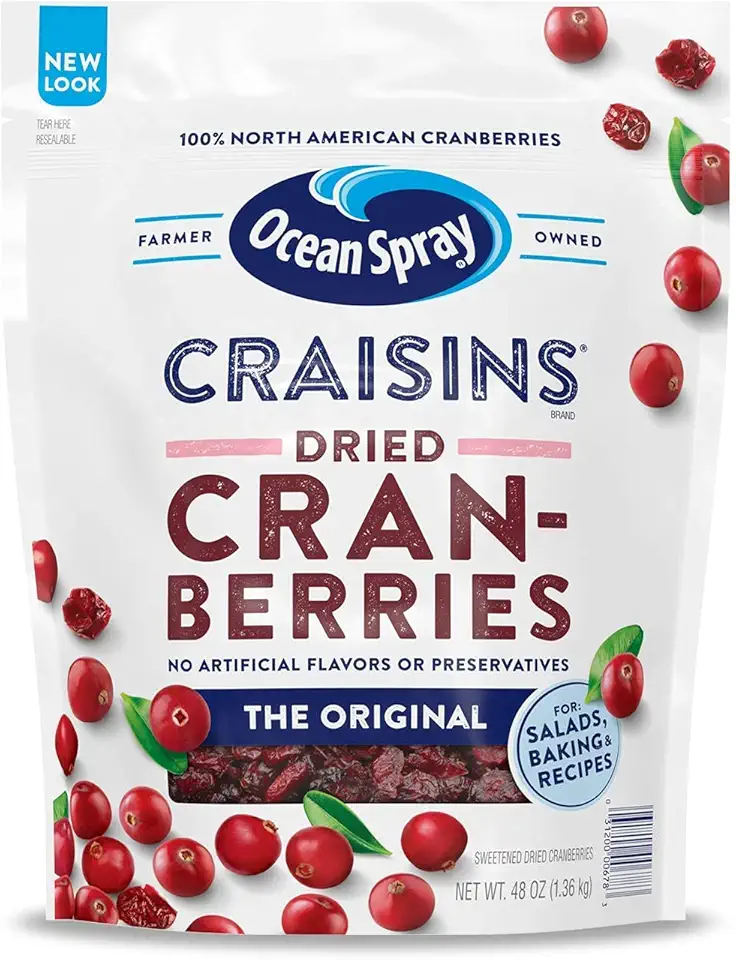 Ocean Spray Craisins Dried Cranberries, Original, 48 Ounce
$7.62
View details
Prime
Ocean Spray Craisins Dried Cranberries, Original, 48 Ounce
$7.62
View details
Prime
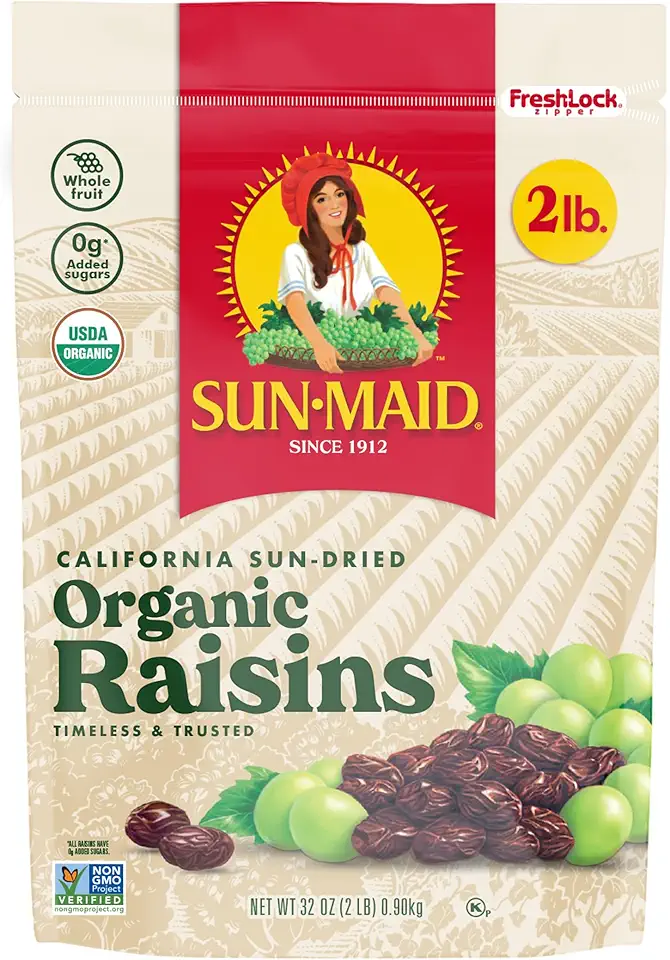 Sun-Maid Organic California Sun-Dried Raisins - 32 oz Resealable Bag - Organic Dried Fruit Snack for Lunches, Snacks, and Natural Sweeteners
$10.93
View details
Prime
Sun-Maid Organic California Sun-Dried Raisins - 32 oz Resealable Bag - Organic Dried Fruit Snack for Lunches, Snacks, and Natural Sweeteners
$10.93
View details
Prime
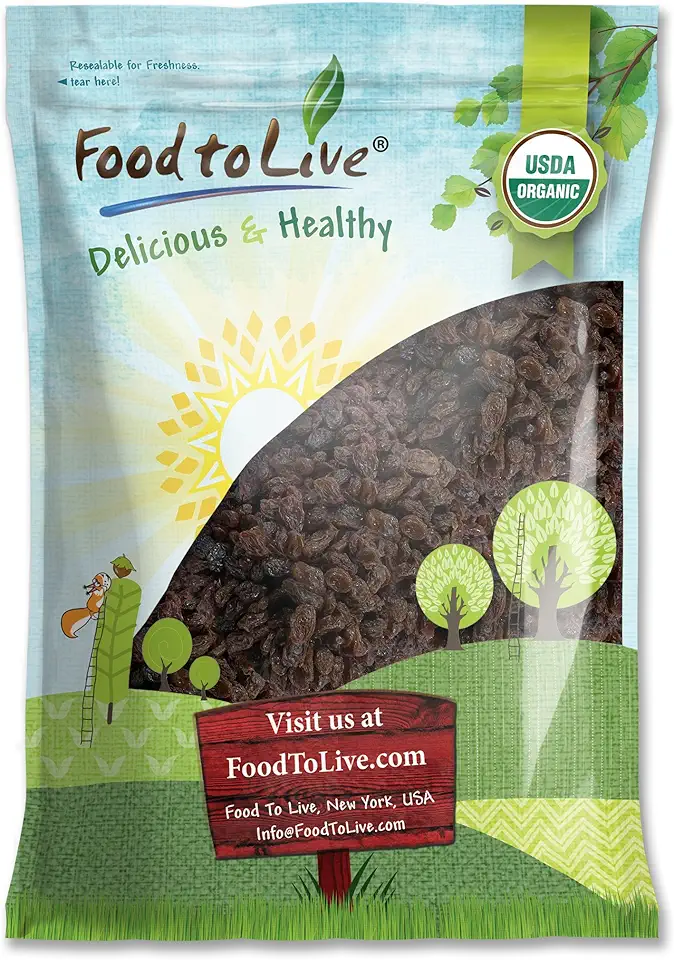 Food to Live California Organic Raisins, 8 Pounds – Thompson Seedless Select, Sun-Dried, Non-GMO, Kosher, Unsulphured, Bulk, No Oil Added
$59.20
View details
Food to Live California Organic Raisins, 8 Pounds – Thompson Seedless Select, Sun-Dried, Non-GMO, Kosher, Unsulphured, Bulk, No Oil Added
$59.20
View details
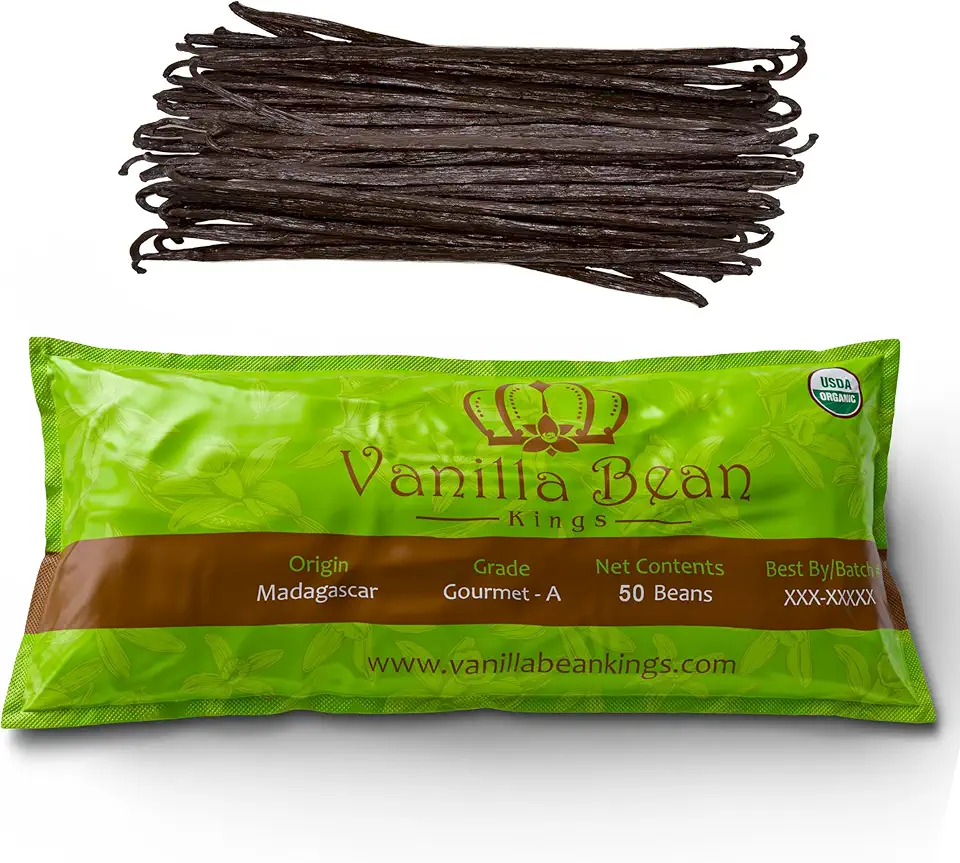 50 Organic Madagascar Vanilla Beans. Whole Grade A Vanilla Pods for Vanilla Extract and Baking
$39.99
View details
Prime
50 Organic Madagascar Vanilla Beans. Whole Grade A Vanilla Pods for Vanilla Extract and Baking
$39.99
View details
Prime
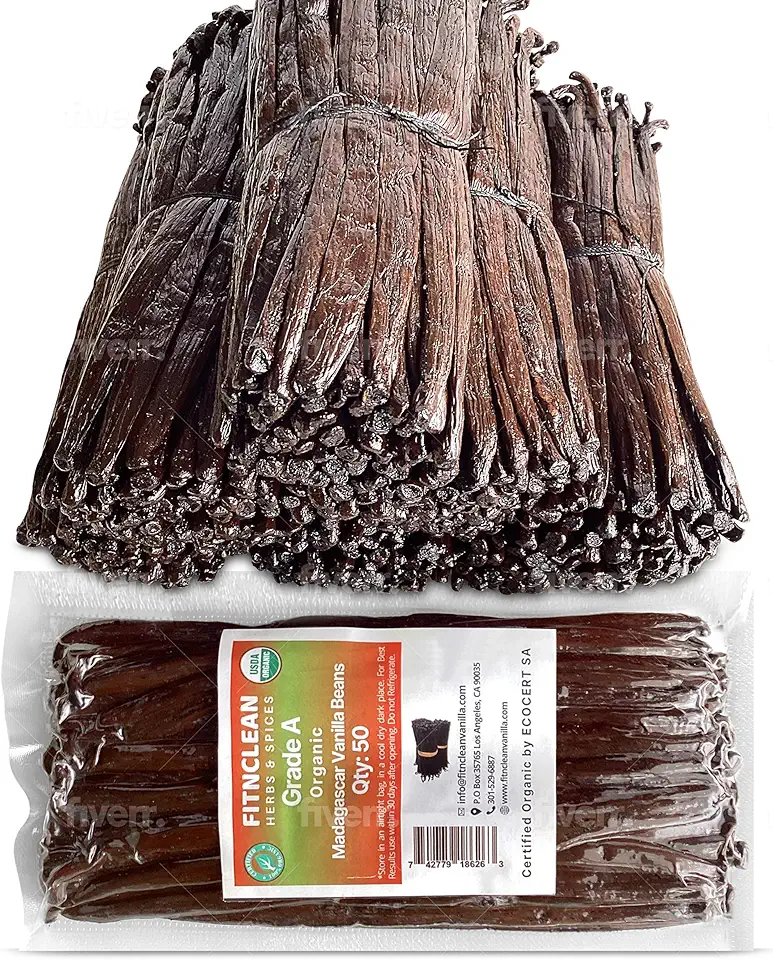 50 Organic Grade A Madagascar Vanilla Beans. Certified USDA Organic for Extract and all things Vanilla by FITNCLEAN VANILLA. ~5" Bulk Fresh Bourbon NON-GMO Pods.
$37.99
View details
Prime
50 Organic Grade A Madagascar Vanilla Beans. Certified USDA Organic for Extract and all things Vanilla by FITNCLEAN VANILLA. ~5" Bulk Fresh Bourbon NON-GMO Pods.
$37.99
View details
Prime
 Nielsen-Massey Madagascar Bourbon Pure Vanilla Extract for Baking and Cooking, 4 Ounce Bottle
$19.95
View details
Nielsen-Massey Madagascar Bourbon Pure Vanilla Extract for Baking and Cooking, 4 Ounce Bottle
$19.95
View details
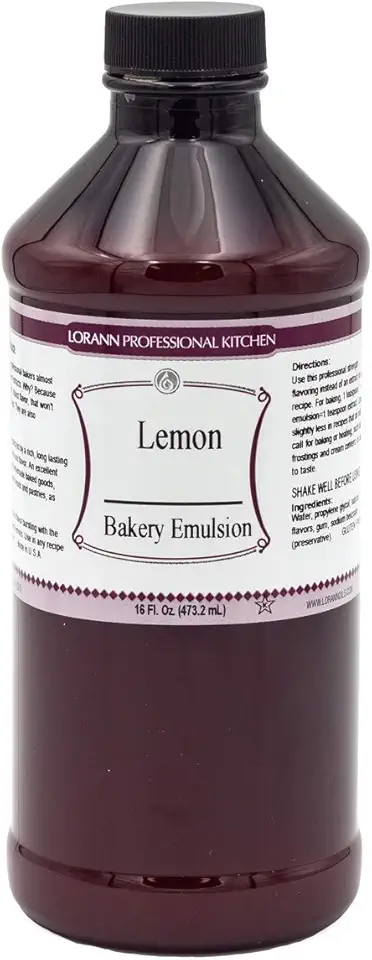 Lorann Oils Lemon Bakery Emulsion: Tangy Lemon Essence, Perfect for Amplifying Citrus Tones in Cakes, Cookies & Desserts, Gluten-Free, Keto-Friendly, Lemon Extract Alternative Essential
$20.00
$23.99
View details
Prime
Lorann Oils Lemon Bakery Emulsion: Tangy Lemon Essence, Perfect for Amplifying Citrus Tones in Cakes, Cookies & Desserts, Gluten-Free, Keto-Friendly, Lemon Extract Alternative Essential
$20.00
$23.99
View details
Prime
 Earthborn Elements Lemon Peel Granules, 1 Gallon Bucket, Pure & Natural, Food Grade
$49.99
View details
Prime
Earthborn Elements Lemon Peel Granules, 1 Gallon Bucket, Pure & Natural, Food Grade
$49.99
View details
Prime
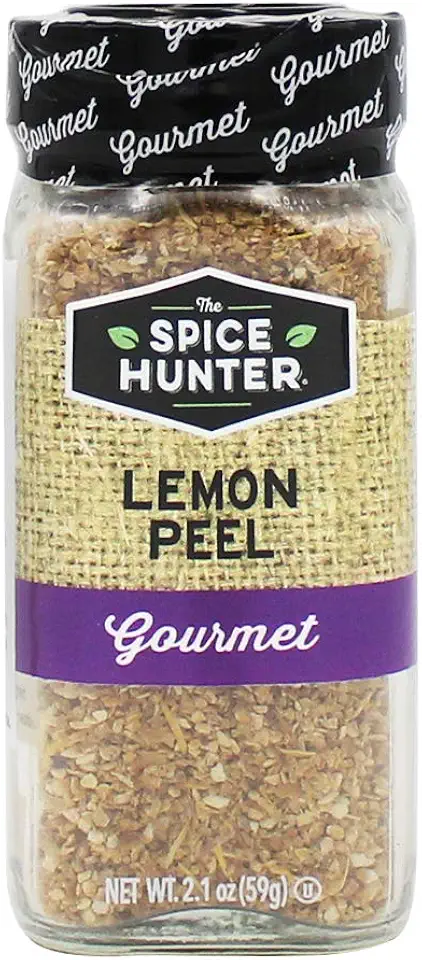 SPICE HUNTER LEMON PEEL GRATED
$7.49
View details
SPICE HUNTER LEMON PEEL GRATED
$7.49
View details
Instructions
Step 1
Start by sifting **the flour, baking powder**, and **salt** together in a large mixing bowl. This will ensure that your cake has a light and airy texture. Add the **sugar** to the mixture and stir well.
This combination of dry ingredients plays a crucial role in the cake's structure, so take your time to mix them thoroughly.
Step 2
In another bowl, whisk together the **eggs**, **melted butter**, and **milk**. Make sure all the ingredients are at room temperature for the best results. **Vanilla extract** and the **zest of the lemon** can be added at this stage to enhance the flavor of your cake.
Combine the wet ingredients until they are completely blended before moving to the next step.
Step 3
Gently add the wet mixture to the bowl with the dry ingredients. Stir until just combined; it's perfectly fine if there are a few lumps. Overmixing could lead to a dense cake, and we want something light and fluffy!
Finally, fold in the **raisins or dried fruits** to the batter, ensuring an even distribution for bursts of flavor.
Step 4
Preheat your oven to **180 degrees Celsius (350 degrees Fahrenheit)**. Pour the batter into a greased and lined cake pan. Bake for **30-35 minutes**, or until a toothpick inserted into the center comes out clean.
Keep an eye on it as baking times may vary depending on your oven. Once done, let the cake cool in the pan for a few minutes before transferring it to a wire rack.
Step 5
Once completely cooled, decorate your Easter cake as desired. You can use **icing**, **powdered sugar**, or even fresh **edible flowers** for a beautiful presentation.
Slice, serve, and enjoy this festive cake with your family and friends during your spring celebrations!
Servings
Once your Easter bread is baked and cooled, it’s time to serve it up in style! Consider these delightful serving suggestions:
Toast It Up! Serve slices of your heavenly bread toasted with a bit of butter or cream cheese spread. The warmth enhances its flavors and makes it a cozy addition to any breakfast table. 🥖✨
Pair with Fresh Fruits! Complement your bread with fresh berries or slices of citrus fruit. The brightness balances perfectly with the richness of the bread. 🥄🍓
Enjoy with Hot Beverages! This bread goes beautifully with a warm cup of coffee, tea, or even hot chocolate, perfect for a chilly Easter morning. ☕🌼
Lastly, don’t forget to add some **colorful sprinkles** or a glaze on top for an additional festive touch!
Equipment
Use a round or loaf pan for the best shaping results. Make sure to grease it well or use parchment paper for easy removal!
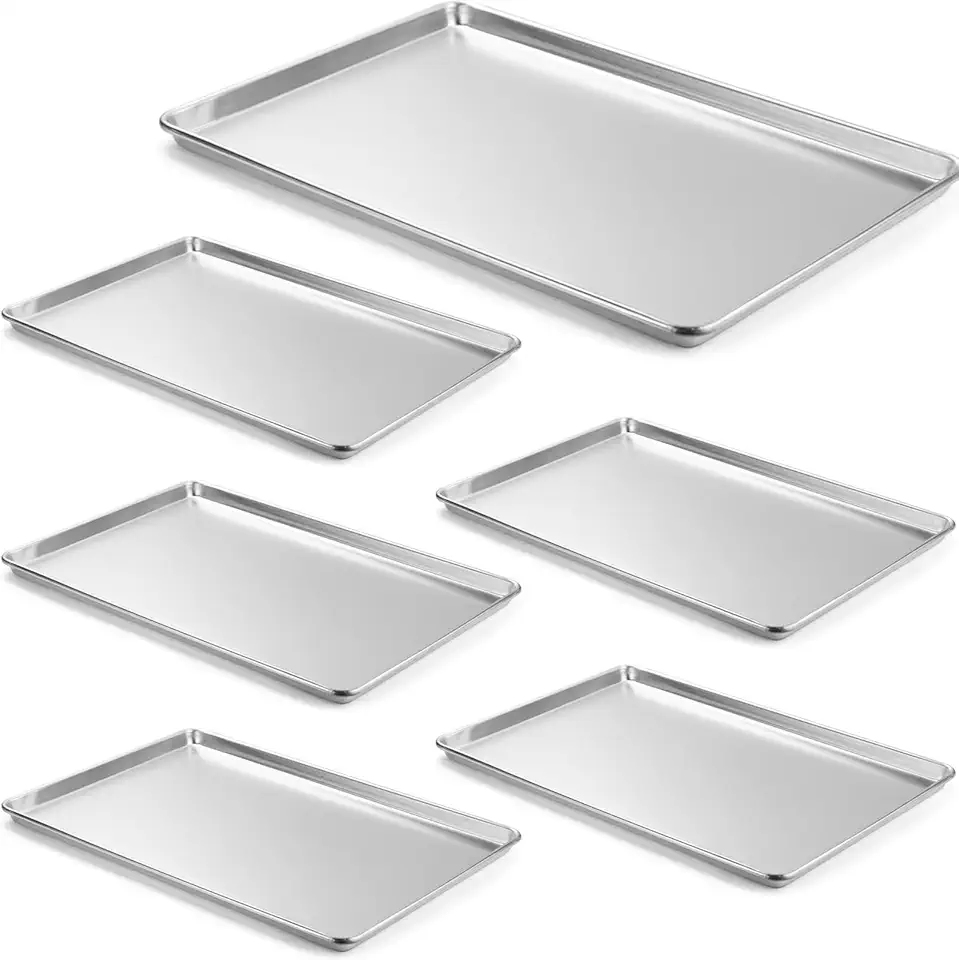 CURTA 6 Pack Aluminum Sheet Pan, NSF Listed Full Size 26 x 18 inch Commercial Bakery Cake Bun Pan, Baking Tray
$99.99
View details
Prime
best seller
CURTA 6 Pack Aluminum Sheet Pan, NSF Listed Full Size 26 x 18 inch Commercial Bakery Cake Bun Pan, Baking Tray
$99.99
View details
Prime
best seller
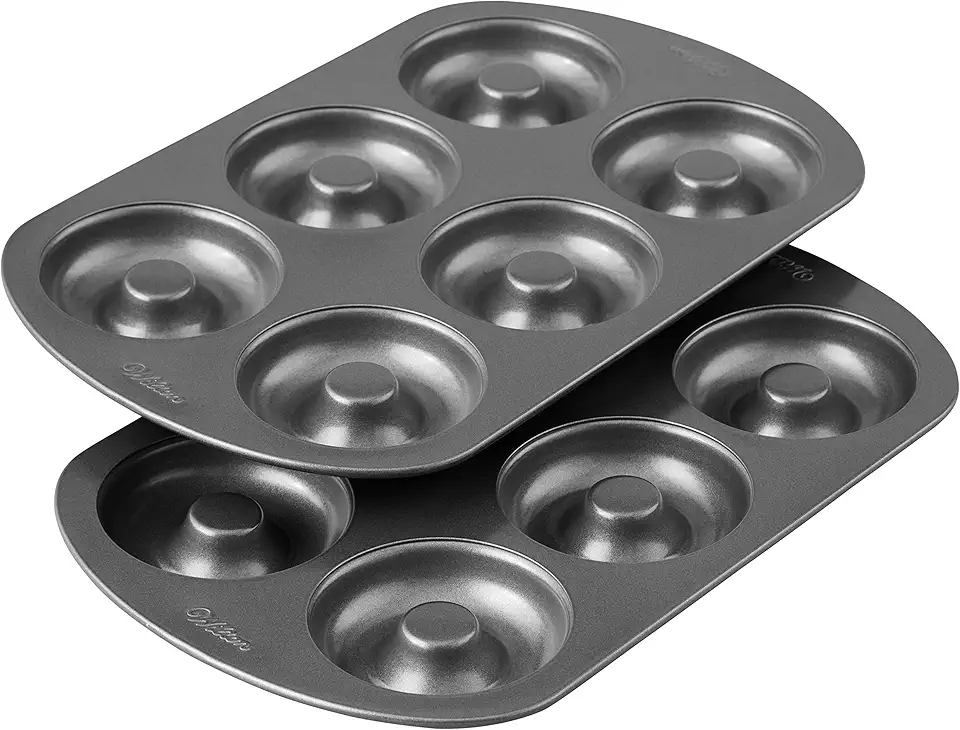 Wilton Non-Stick 6-Cavity Donut Baking Pans, 2-Count
$17.98
$20.79
View details
Prime
best seller
Wilton Non-Stick 6-Cavity Donut Baking Pans, 2-Count
$17.98
$20.79
View details
Prime
best seller
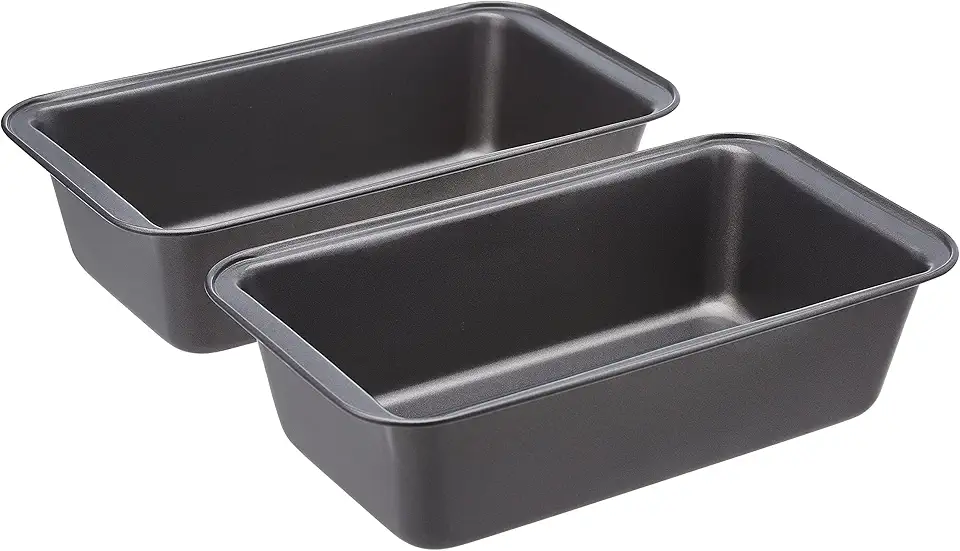 Amazon Basics Rectangular Baking Bread Loaf Pan, 9.5 x 5 Inch, Set of 2, Gray
$13.49
View details
Amazon Basics Rectangular Baking Bread Loaf Pan, 9.5 x 5 Inch, Set of 2, Gray
$13.49
View details
A stand mixer is ideal for kneading the dough, but a hand mixer will work too. The key is to get that dough nice and stretchy!
Precision is key in baking! Make sure to measure your ingredients accurately for the best results.
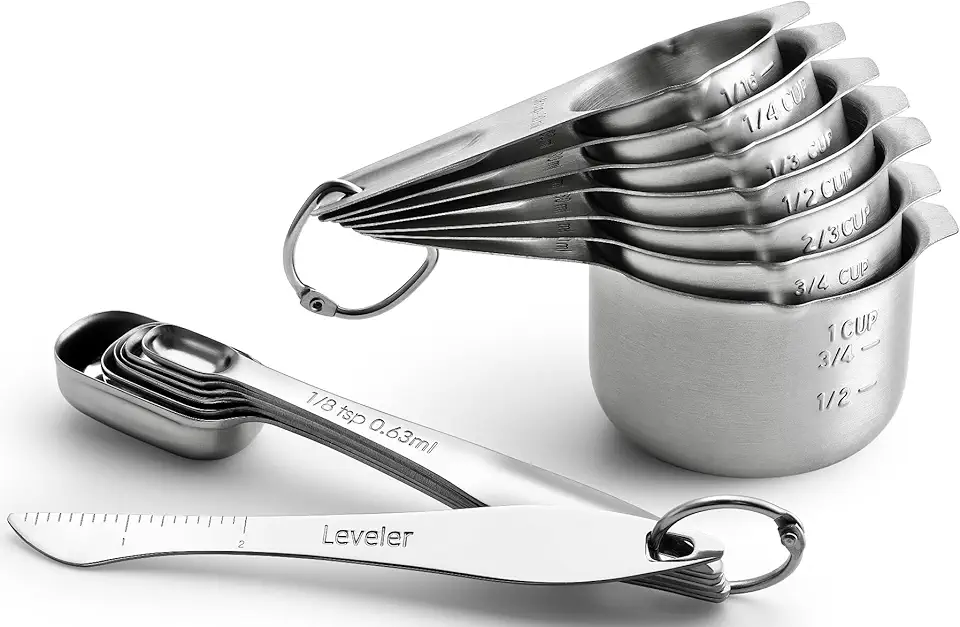 Spring Chef Stainless Steel Measuring Cups and Measuring Spoons Set of 14 with Leveler, Nesting Kitchen Metal Measuring Cups and Spoons Set for Dry and Liquid Ingredients, Perfect for Cooking & Baking
$21.99
View details
Prime
Spring Chef Stainless Steel Measuring Cups and Measuring Spoons Set of 14 with Leveler, Nesting Kitchen Metal Measuring Cups and Spoons Set for Dry and Liquid Ingredients, Perfect for Cooking & Baking
$21.99
View details
Prime
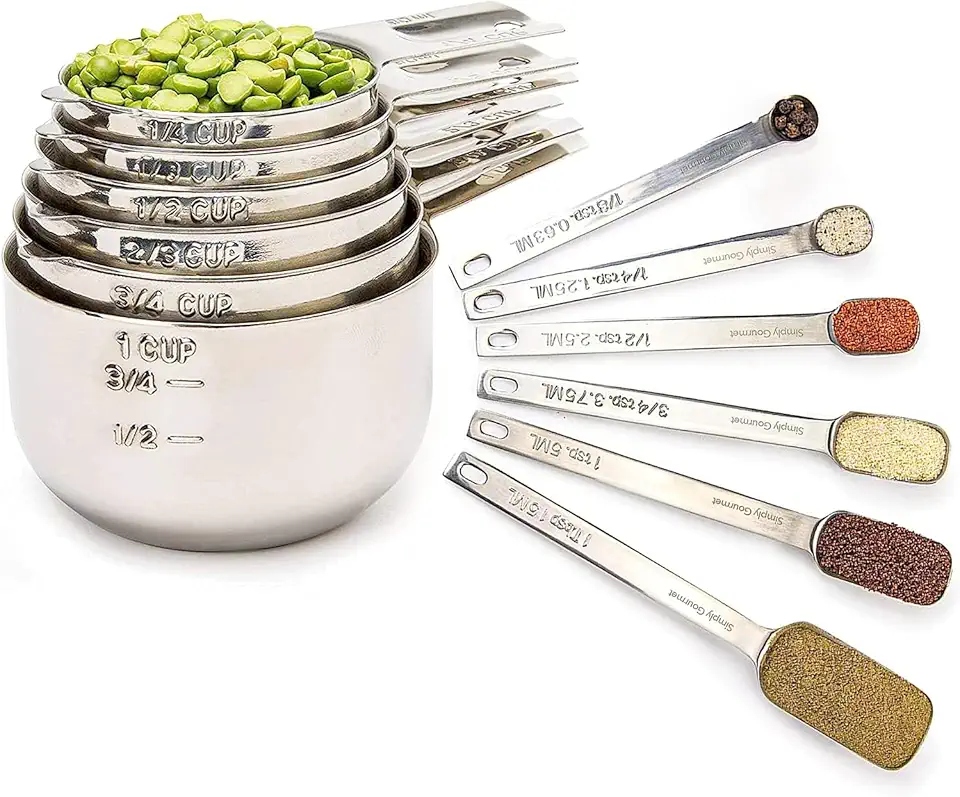 Simply Gourmet Measuring Cups and Spoons Set of 12, 304 Premium Stainless Steel, Stackable Cups Long Handle Spoons Fits Narrow Jars, Kitchen Gadgets for Liquid & Dry Ingredients Cooking Baking
$32.98
$45.99
View details
Prime
Simply Gourmet Measuring Cups and Spoons Set of 12, 304 Premium Stainless Steel, Stackable Cups Long Handle Spoons Fits Narrow Jars, Kitchen Gadgets for Liquid & Dry Ingredients Cooking Baking
$32.98
$45.99
View details
Prime
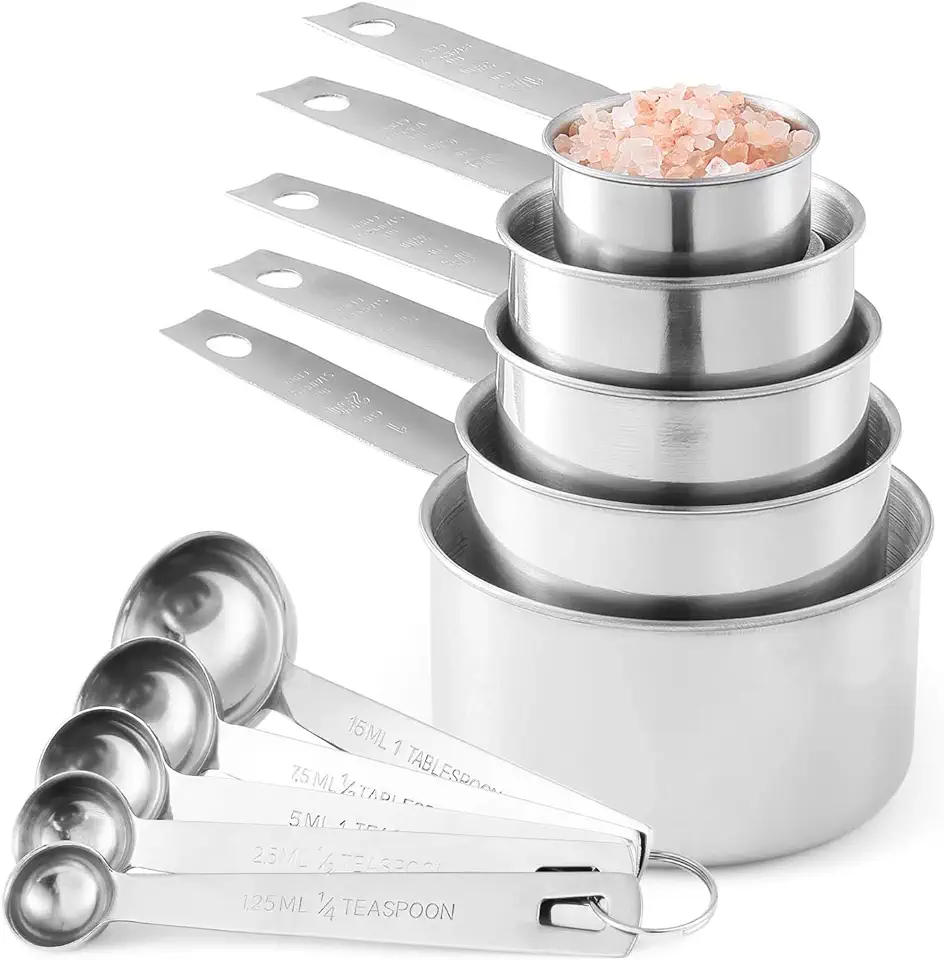 Stainless Steel Measuring Cups And Measuring Spoons 10-Piece Set, 5 Cups And 5 Spoons
$13.95
$17.98
View details
Stainless Steel Measuring Cups And Measuring Spoons 10-Piece Set, 5 Cups And 5 Spoons
$13.95
$17.98
View details
A good rolling pin helps in shaping the dough evenly. Try to use a non-stick one for ease!
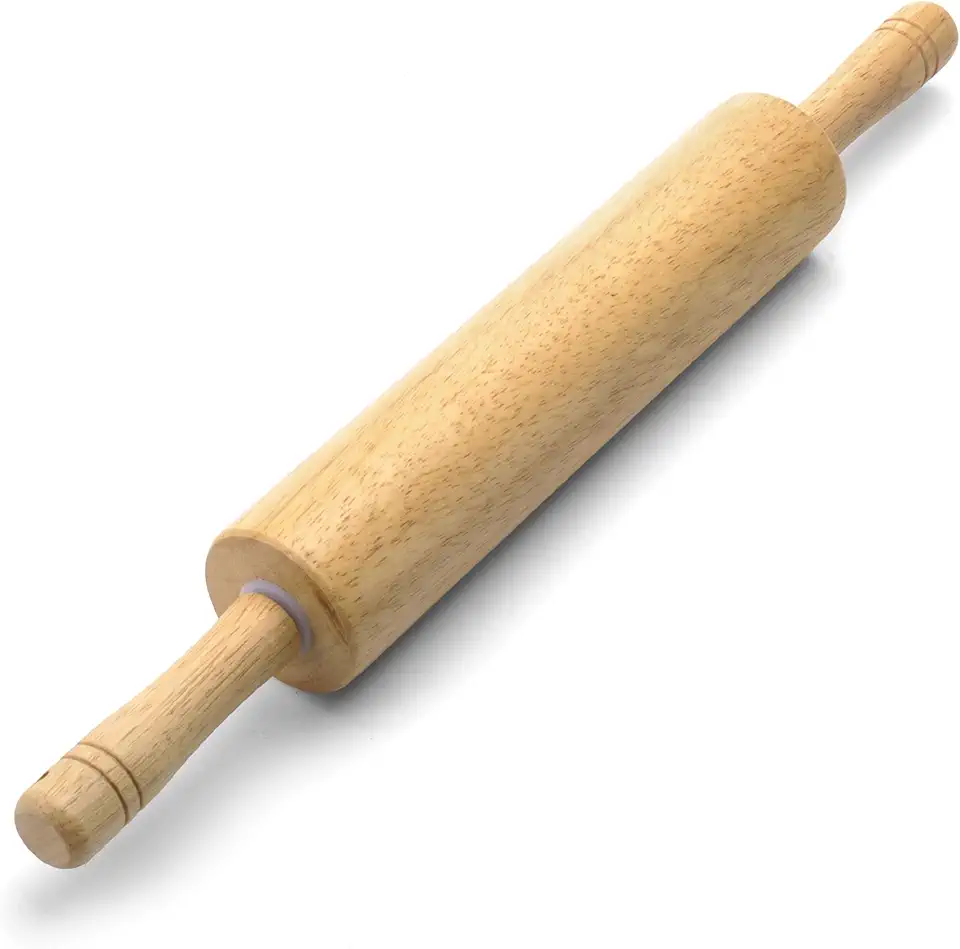 Farberware Classic Wood Rolling Pin, 17.75-Inch, Natural
$12.99
$13.99
View details
Prime
Farberware Classic Wood Rolling Pin, 17.75-Inch, Natural
$12.99
$13.99
View details
Prime
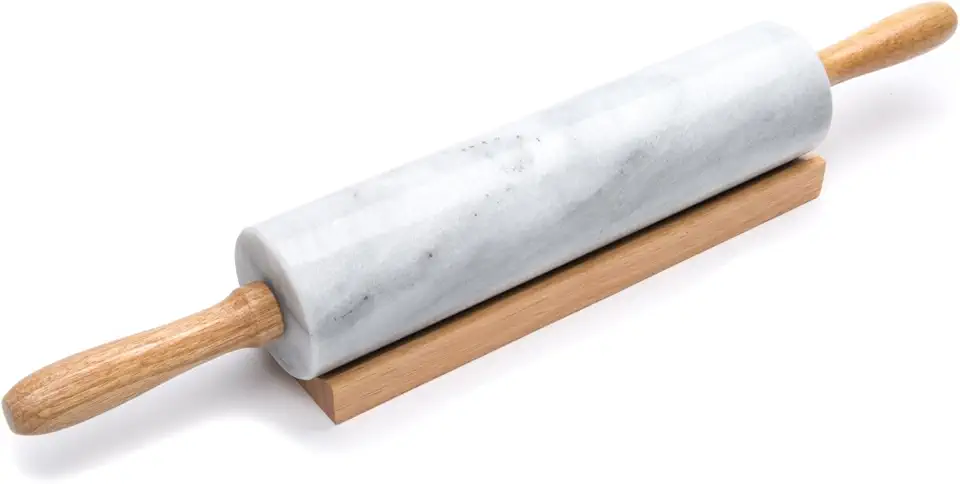 Fox Run Polished Marble Rolling Pin with Wooden Cradle, 10-Inch Barrel, White
$20.88
View details
Prime
Fox Run Polished Marble Rolling Pin with Wooden Cradle, 10-Inch Barrel, White
$20.88
View details
Prime
 French Rolling Pin (17 Inches) –WoodenRoll Pin for Fondant, Pie Crust, Cookie, Pastry, Dough –Tapered Design & Smooth Construction - Essential Kitchen Utensil
$9.99
View details
French Rolling Pin (17 Inches) –WoodenRoll Pin for Fondant, Pie Crust, Cookie, Pastry, Dough –Tapered Design & Smooth Construction - Essential Kitchen Utensil
$9.99
View details
For the most accurate measurements, especially for flour and sugar, use a kitchen scale.
Variations
If you're looking to tweak this recipe to fit specific diets, here are some easy variations:
Gluten-Free Option: Substitute the all-purpose flour with a gluten-free flour blend. Make sure to add a teaspoon of xanthan gum to help with the structure of the bread! 🌾🚫
Vegan Option: Swap the eggs with flaxseed meal (1 tablespoon mixed with 2.5 tablespoons of water per egg) and use almond or oat milk instead of dairy milk. This way, everyone can enjoy your delicious creation! 🌱🥛
Faq
- What if my dough doesn’t rise?
Make sure your yeast is fresh and that you're keeping the dough in a warm, draft-free area for rising. If it’s too cold, the yeast won't activate.
- How do I know when my bread is done baking?
The bread should be golden on top and sound hollow when tapped on the bottom. You can also use a thermometer to check that the internal temperature is around 190°F (88°C).
- Can I add different flavors or ingredients to the dough?
Absolutely! You can mix in dried fruits, nuts, or even spices like cinnamon for a nice twist. Just be careful not to overload the dough.
- Why is my bread too dense?
This usually means that the dough wasn't kneaded enough or that too much flour was added. Make sure to follow the measurements and knead until it's smooth and elastic.
- Can I freeze this Easter bread?
Yes! Wrap it tightly and store it in the freezer. It can be enjoyed for up to three months! Just thaw and warm to enjoy its deliciousness again.
- How should I store leftover bread?
Keep it in an airtight container at room temperature for up to three days. For longer storage, slice it and freeze it for later use!
